Nectarines: Important Facts, Health Benefits, and Recipes
Explore the world of nectarines with our ultimate guide, covering nutrition, health benefits, history, storage, and culinary uses of this delicious stone fruit.
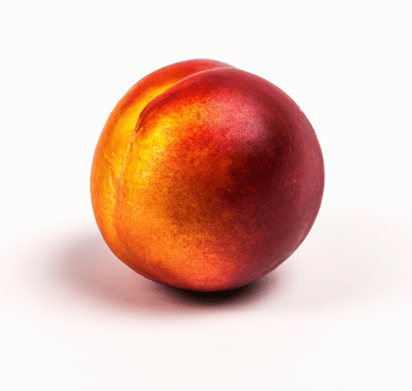
Nutritional Facts
1 medium
Amount per serving
Calories
62.5
Carbohydrates
15 g
Fat
0.5 g
Protein
1.5 g
Saturated Fat
0 g
Sodium
0 mg
Fiber
2.4 g
Sugar
11.2 g
Best Nectarines Recipes
-
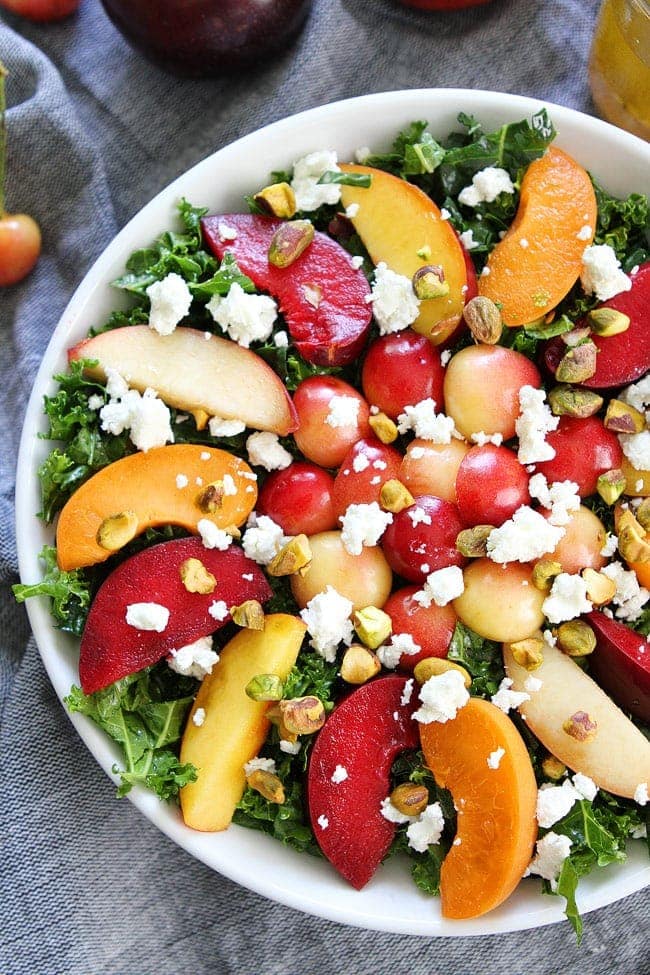
-

-

-

-

-

-
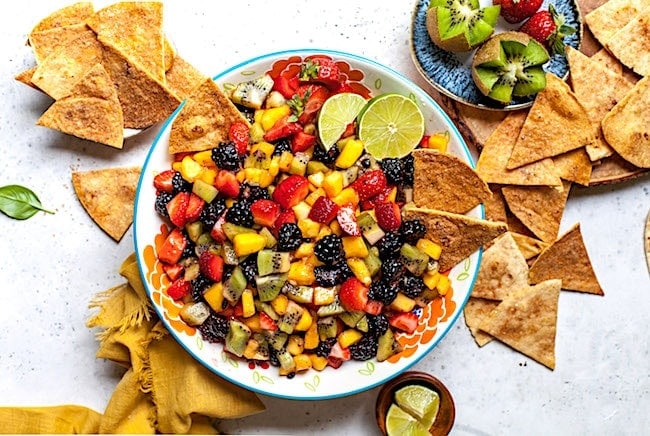
-
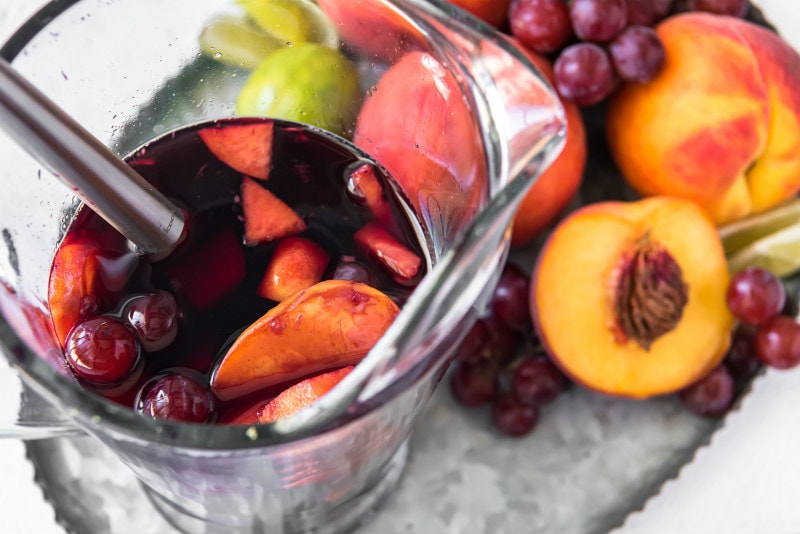
-
![Stone Fruit Parfait Image]()
-
![End of Summer Salsa Image]()
-
![Fruit Salsa Image]()
-
![Nectarine Heirloom Burrata Salad Image]()
-
![Easy Nectarine Crisp with Granola Image]()
-
![Grape Sangria Image]()
-
![Watermelon White Sangria Image]()
-
![Nectarine Cupcakes Image]()
-
![Fruit Salad with Lime Syrup Image]()
-
![Erin's Peach & Avocado Green Salad Image]()
-
![Focaccia Nectarine Fruit Bites Image]()
-
![Summer Berry Trifle with Italian Pastry Cream Image]()
-
![Frozen Berry Chocolate Yogurt Bark Image]()
-
![Peach Cobbler Cheesecake Bars Image]()
-
![Nectarine, Cherry, and Strawberry Crisp Image]()
-
![Broiled Nectarines with Cashews, Bacon, Arugula, and Balsamic Cream Image]()
-
![Grilled Pork Tenderloin and Peaches Recipe Image]()
-
![Blueberry Peach Fruit Salad with Thyme Recipe Image]()
-
![Blueberry-Nectarine Crisp Recipe Image]()
-
![Captain Anne Bonnie Recipe Image]()
-
![Ceviche de Mango (Mango Ceviche) From Ceviche: Peruvian Kitchen Image]()
-
![Fresh Basil Mousse Recipe Image]()
-
![Nectarine, Tomato and Basil Salad With Torn Mozzarella From 'A Change of Appetite' Image]()
-
![Navy Fizz Recipe Image]()
-
![Suns 'n Roses (Rum and Stone Fruit Punch) Recipe Image]()
-
![Serious Salads: Stone Fruits with Ginger-Lime Syrup and Mint Recipe Image]()
-
![Grilled Summer Smash Recipe Image]()
-
![Lazy Oven French Toast Casserole or Strata Recipe Image]()
-
![Fruit Salad with Orange Juice and Honey Recipe Image]()
-
![Nectarine Juice Smoothie Recipe Image]()
-
![Grilled Honey Basted Nectarines Recipe Image]()
-
![Marinated Fruit Salad Recipe Image]()
-
![Burrata Salad Image]()
-
![Grilled Peaches Recipe Image]()
-
![Grilled Salmon Recipe with Nectarines and Goat Cheese Image]()
-
![Fresh Fruit Tart Recipe Image]()
-
-
-
![Cinnamon Maple Grilled Peaches Image]()
-
![Melocotones asados con canela y arce Image]()









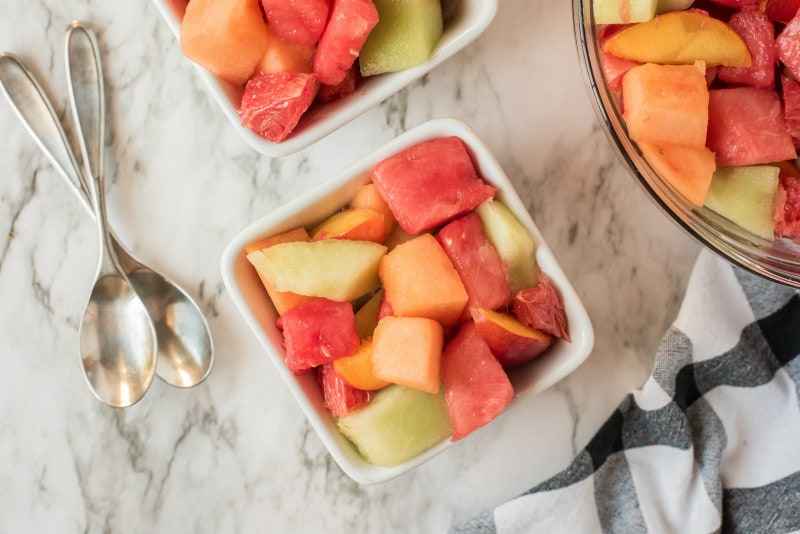



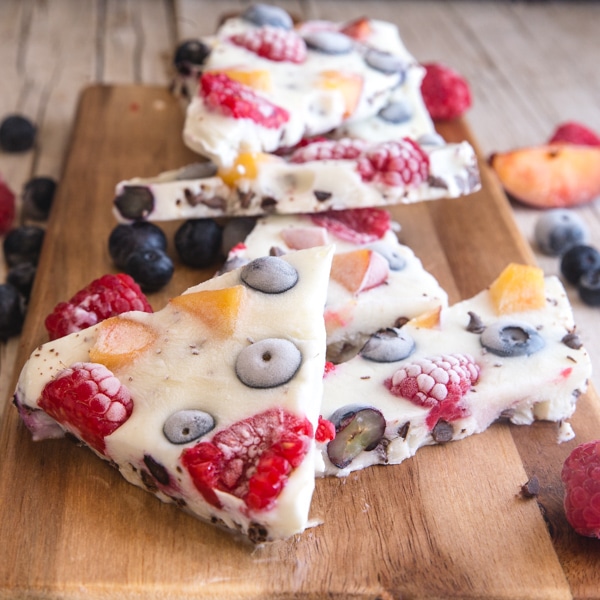



:max_bytes(150000):strip_icc()/__opt__aboutcom__coeus__resources__content_migration__simply_recipes__uploads__2011__07__grilled-pork-tenderloin-peaches-horiz-a-1600-750346d9a35b4525889c8fad2c74bc48.jpg)
:max_bytes(150000):strip_icc()/__opt__aboutcom__coeus__resources__content_migration__simply_recipes__uploads__2008__07__blueberry-peach-fruit-salad-horiz-a2-1600-22976c3d400f4e9790d34b7b2c5b3c13.jpg)
:max_bytes(150000):strip_icc()/__opt__aboutcom__coeus__resources__content_migration__serious_eats__seriouseats.com__recipes__images__2011__08__20110806-jmc-nectarine-blueberry-crumbs-5ef3d3ebc8e344f78f71e417ae6812b7.jpg)
:max_bytes(150000):strip_icc()/__opt__aboutcom__coeus__resources__content_migration__serious_eats__seriouseats.com__recipes__images__2012__08__20120810-peach_cocktails-1-27905e2f286c428894997472836e96f2.jpg)
:max_bytes(150000):strip_icc()/__opt__aboutcom__coeus__resources__content_migration__serious_eats__seriouseats.com__recipes__images__2014__06__20140626-cook-the-book-ceviche-ceviche-de-mango-paul-winch-furness-d640d4f25e4a431395763a809608faf4.jpg)
:max_bytes(150000):strip_icc()/__opt__aboutcom__coeus__resources__content_migration__serious_eats__seriouseats.com__2018__05__20180530-basil-white-chocolate-mousse-vicky-wasik-31-28a184ce6f634f2f996cca07e0915183.jpg)

:max_bytes(150000):strip_icc()/__opt__aboutcom__coeus__resources__content_migration__serious_eats__seriouseats.com__recipes__images__2012__08__20120810-peach_cocktails-11-87cc0777dc1b475983d13c72b9e39874.jpg)
:max_bytes(150000):strip_icc()/__opt__aboutcom__coeus__resources__content_migration__serious_eats__seriouseats.com__recipes__images__2016__08__20160804-sun-and-roses-cocktail-vicky-wasik-1-23832645a1dc41359e2b9893d507fa59.jpg)
:max_bytes(150000):strip_icc()/__opt__aboutcom__coeus__resources__content_migration__serious_eats__seriouseats.com__recipes__images__2011__08__20100831-stone-fruits-with-ginger-lime-syrup-mint-ef55cf93c73540b08707b377fdbac797.jpg)
:max_bytes(150000):strip_icc()/__opt__aboutcom__coeus__resources__content_migration__serious_eats__seriouseats.com__recipes__images__2014__05__20140524summersmash-cocktail-ca9c1f3272b74149a87a4d6edf589f81.jpg)
/GettyImages-504361472-be6ceb4aff694550ba17e6c8d183a171.jpg)
/GettyImages-57421868-5755b9df3df78c9b46845eb3.jpg)
:max_bytes(150000):strip_icc()/GettyImages-509108623-568971225f9b586a9e66ab3b.jpg)
/nectarine-589deec23df78c4758a2bd02.jpeg)
/melon-balls-186806666-58adea613df78c345be5c33f.jpg)
:max_bytes(150000):strip_icc()/BurrataSalad2-the-spruce-60ef22d0741d4d8899068ef55bd9e6f8.jpg)
:max_bytes(150000):strip_icc()/Simply-Recipes-Grilled_Peaches-LEAD-02-c285a24e165c467f90c71649a753552d.jpg)

:max_bytes(150000):strip_icc()/20240522-SEA-FruitTart-AmandaSuarez-hero-34ab0ddc5f2043f9921ff94e09bc6920.jpg)
